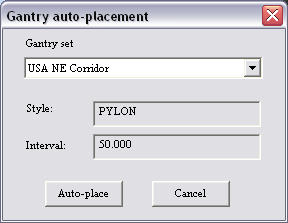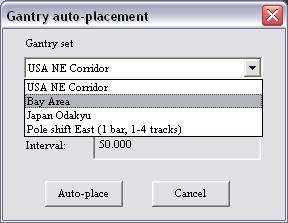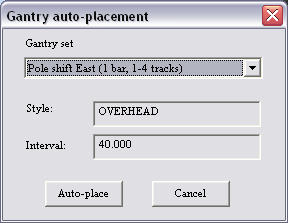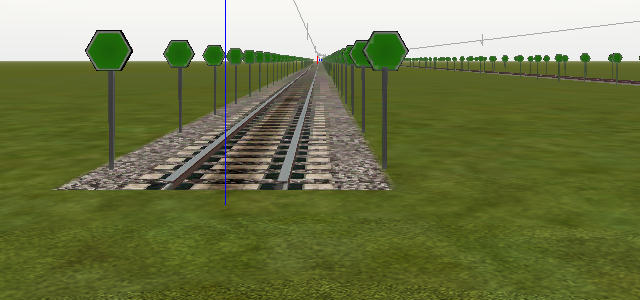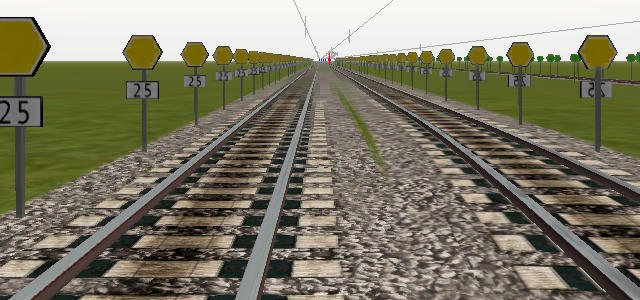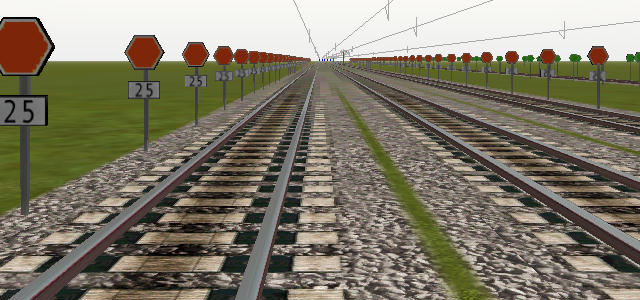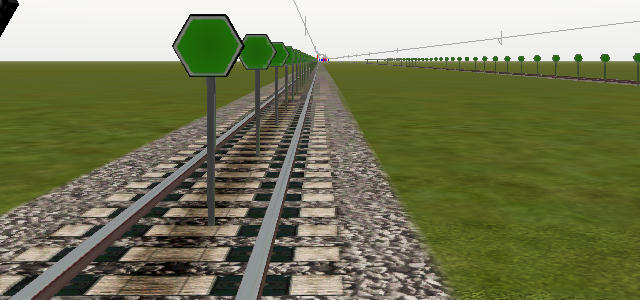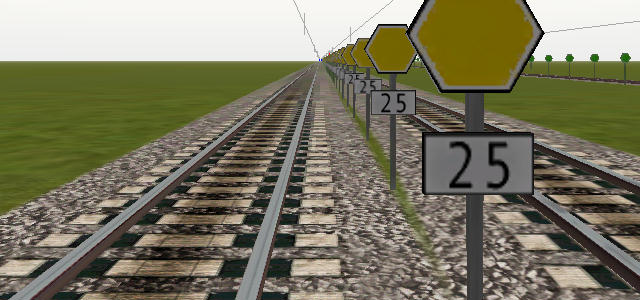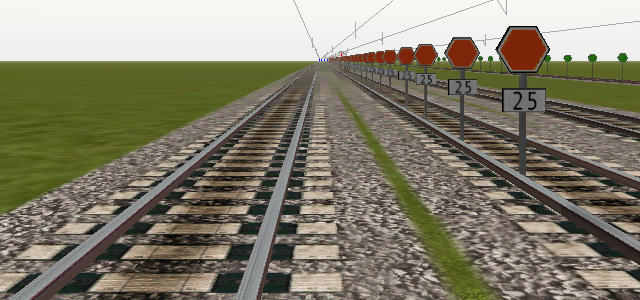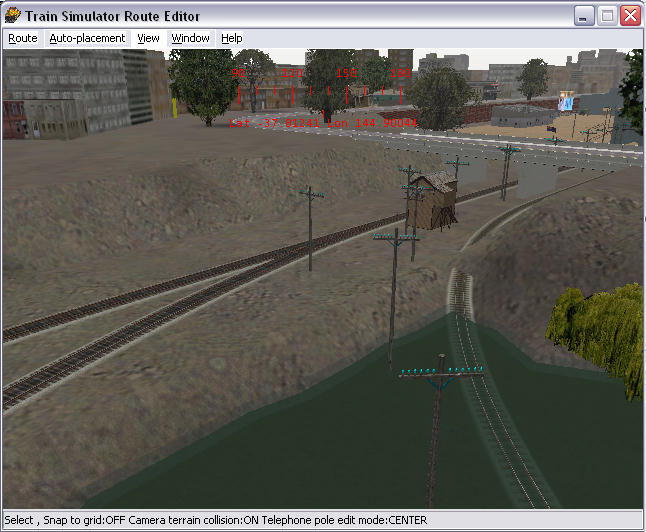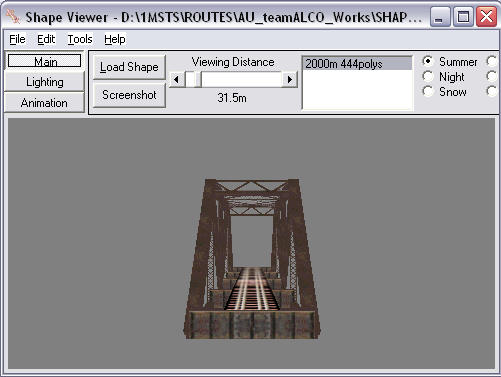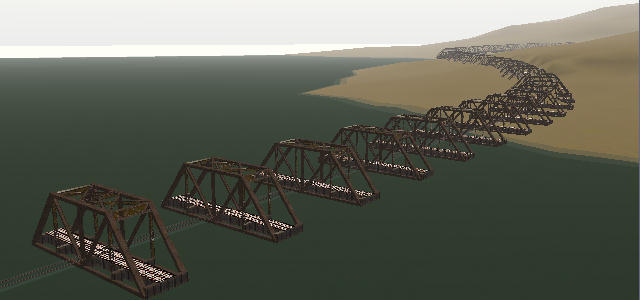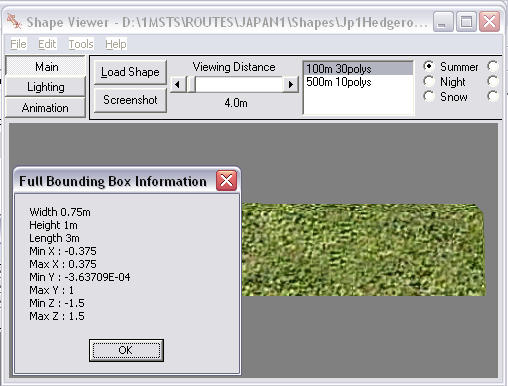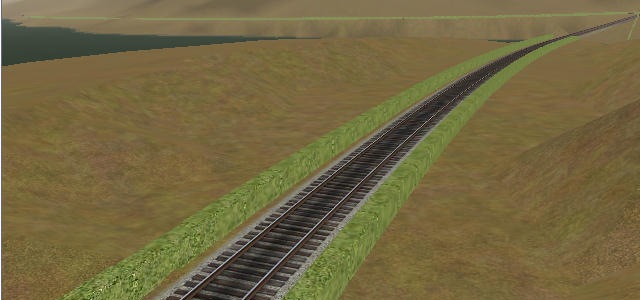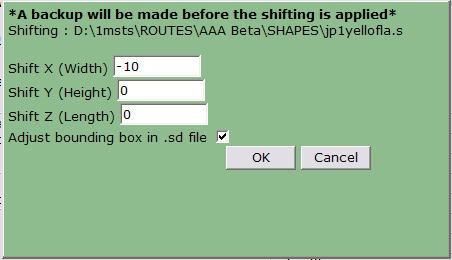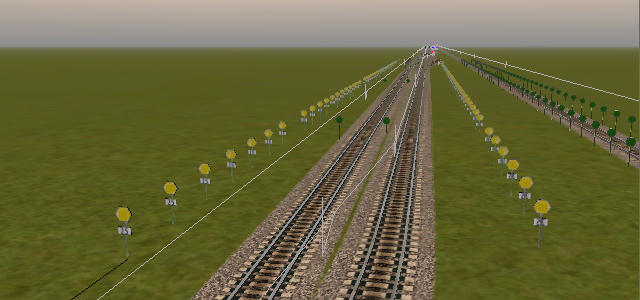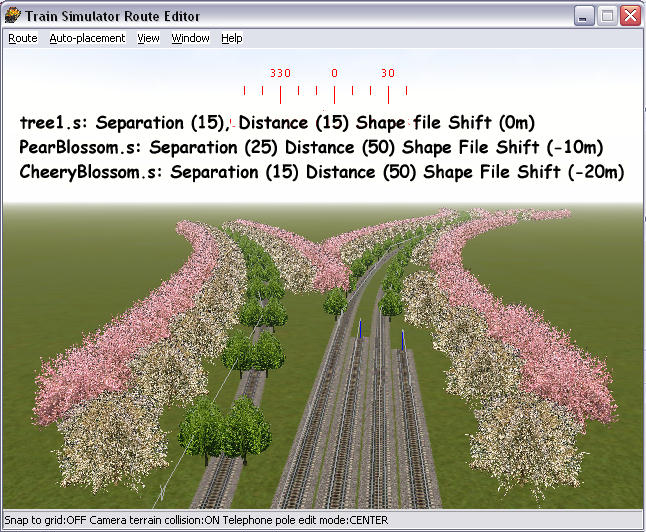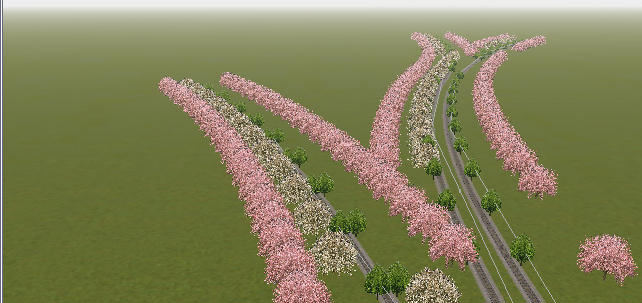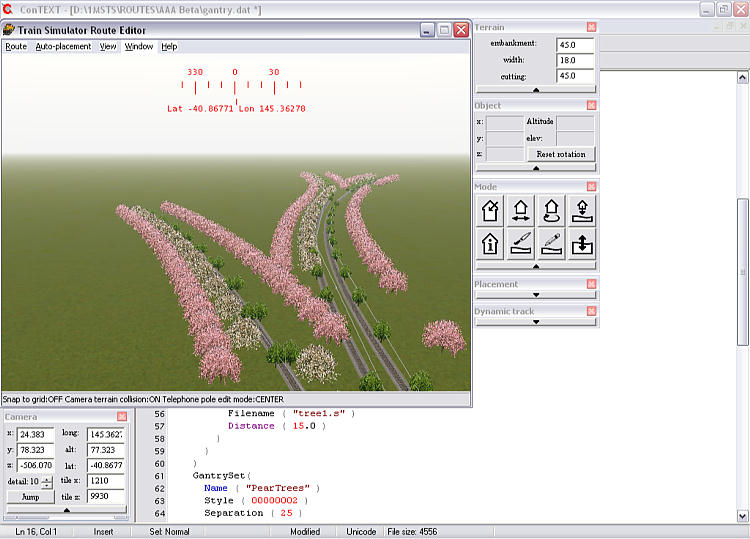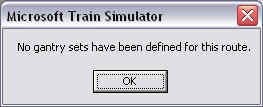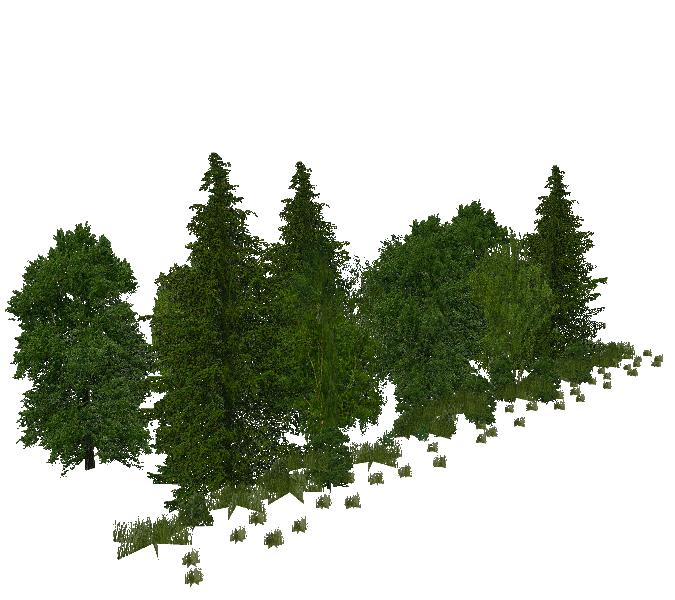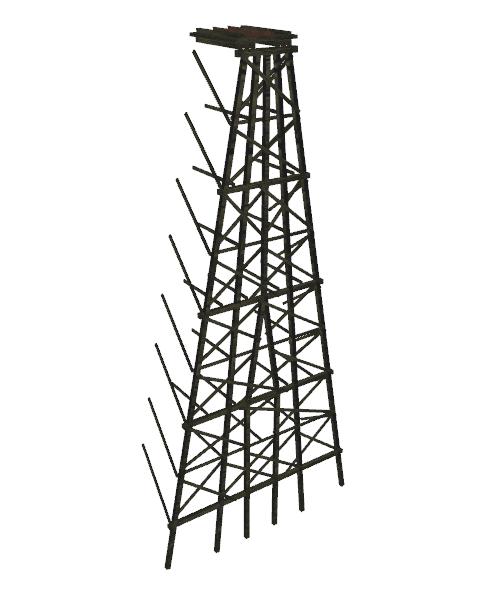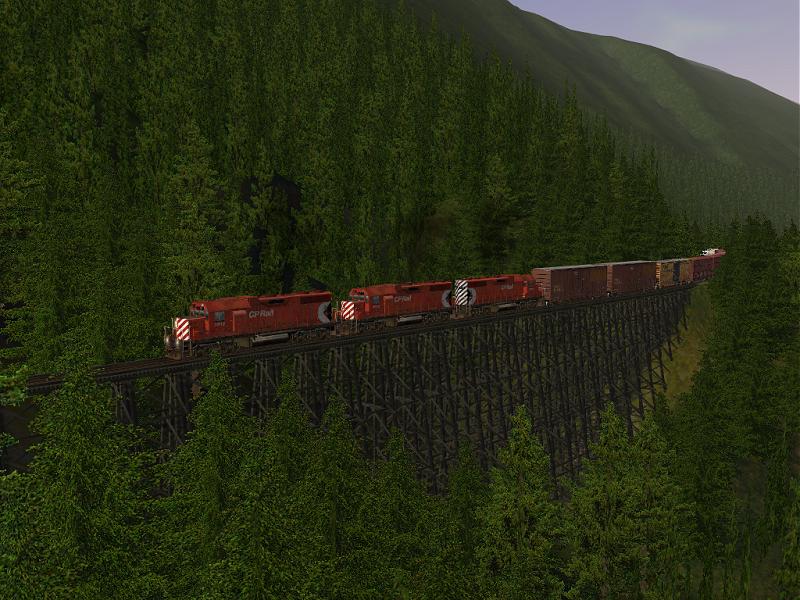Using The Auto-Placement Function (gantry.dat) in Route Editor
by Yuri Sos
with a great deal of help from others such as
Chris Schwan, Lukas Lusser, Phil Voxland
and Jim Ward
Overview
The Auto-Placement menu option in RE is an extraordinarily useful tool which enables you to automatically place gantries or other specified shapes at regular user-determined distances along the edge of tracks within a specified tile, saving you hours and hours of work. The gantry.dat that the Auto-Placement uses allows you to select different shapes for double triple and quadruple or more track sections which the function then places correctly (most of the time). You can select single shapes that are located on either side of the track or use a single shape that spans the track.
Though originally designed for overhead gantries and poles, Joseph Realmuto and Wayne Campbell demonstrated a use for making fences in 2002. In July 2004 Chris Schwan expanded this, creating tree clumps to populate the fringes of the right-of-way. There is really no limit to the number of uses for the Auto-Placement function.
There seems to be no limit to the number of Gantry Set entries you can make in the Gantry.dat file and once you have placed the shapes using Auto-Placement you can individually move/rotate or delete shapes without affecting the rest of the route.
Some limitations: yards cause the Auto-Placement process some problems. Placing shapes away from track edge mean that some shapes may be suspended in mid-air beside embankments or buried in the sides of cuttings. Scale Rail users should also note that all gantries will need to be set as terrain objects or else you will have alpha bleed through.
Overall the advantages far out weigh the minor disadvantages.
As Jim "Sniper" Ward says "....saves an astonishing amount of time, I wish somebody had thought of this 3 years ago!"


